Discover which timber is best for kitchen cabinets. From melamine faced chipboards to veneered MDF, explore a range of options that match durability with style.
Choosing Your Kitchen Cabinet Timber
Choosing the right timber for your kitchen cabinets is a big decision. The type of wood you choose affects durability, strength, appearance and cost. Some options are solid oak for strong grain patterns and natural character, plywood for a sturdy carcass, and MDF for a smooth, easy to paint surface. Each material offers a different balance of performance and price, so this guide will help you find a long lasting choice that fits your kitchen.
Think about how the cabinets will be used over time. Busy kitchens need surfaces that are resistant to moisture, stains and scratches. Look at grain, colour and finish to suit your style, then match doors and carcasses to save costs while keeping quality. With a clear plan, you can choose the best type of wood and build kitchen cabinet units that look good and work well every day.
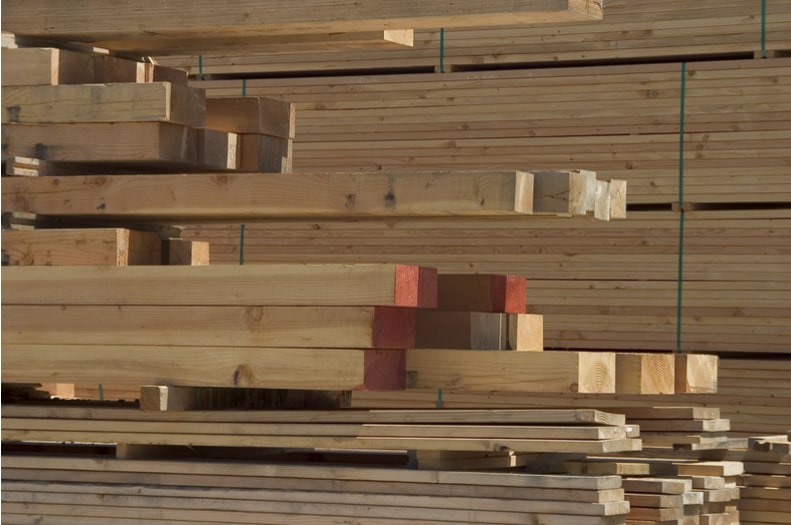
Melamine Faced Chipboards: Durable and Stylish
Melamine faced chipboard cabinets are a popular choice for kitchen designs due to their durability and stylish appearance. This material combines a chipboard core with a melamine resin surface, offering a sleek, smooth finish that is resistant to scratches, stains and moisture. For those seeking affordable kitchen cabinet materials, melamine faced chipboards provide excellent value without compromising quality.
One of the main benefits is the wide range of finishes, including wood grain effects, solid colours and modern textures. These options make it easy to match your kitchen’s aesthetics while keeping costs manageable. Compared to solid wood, melamine faced chipboards need less maintenance and are more resistant to everyday kitchen wear and tear.
While melamine faced chipboards are durable timber for kitchen cabinets, they may not perform as well in areas with prolonged exposure to water. With proper sealing and care, they offer long lasting results. Whether you are updating an existing kitchen or designing a new one, melamine faced chipboard cabinets combine affordability and style, making them a reliable choice in wood types for kitchen cabinets.
Advantages of MDF for Kitchen Cabinets
MDF kitchen cabinets are a versatile and widely used option in modern kitchens. Medium density fibreboard is engineered from wood fibres and resin, which gives a smooth, uniform surface. This is ideal for painting, veneering or laminating, so it is easy to create a neat appearance.
One of the main advantages of MDF is its affordability compared to solid wood. MDF is also less likely to warp or crack, which helps it stay strong over time in rooms with changing humidity. It can be cut and shaped with ease, which is useful when making curved doors or detailed frames.
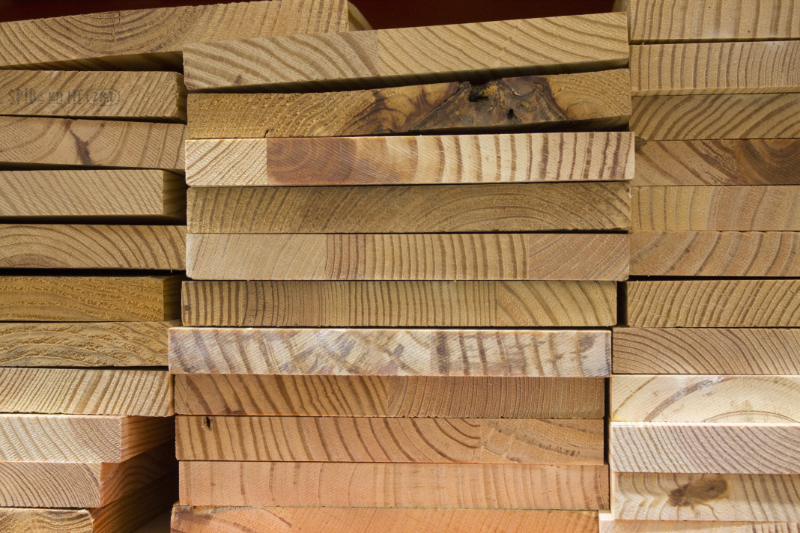
Why Plywood Is a Popular Choice
Plywood for cabinets is a strong, long lasting option. It is made by layering thin sheets of wood veneer with alternating grain patterns. This build gives plywood strength and helps to stop warping, which is useful in busy kitchens.
Plywood kitchen furniture often resists moisture better than chipboard, and it keeps good structural integrity while staying lighter than many solid woods. You can finish plywood with laminates or real wood veneers to fit different styles and colours.
When comparing plywood and chipboard for a kitchen cabinet, plywood is usually more durable, although it costs more. Its ability to handle heavy use makes it a good choice for family kitchens where you want materials that work hard and look neat.
Chipboard: A Budget Friendly Cabinet Material
Chipboard kitchen furniture is an affordable option when you need to save on renovation costs. It is made from compressed wood particles bonded with resin. It is light and budget friendly, and often finished with a veneer or laminate to improve the appearance.
Chipboard is less durable than plywood or MDF. It can swell if it gets wet over time. With careful fitting and sealing, chipboard can still be a practical choice for dry areas of the kitchen.
Veneered MDF: Combining Style and Strength
Veneered MDF combines a smooth MDF core with a thin layer of real wood veneer. This gives the look of solid wood at a lower cost. You can choose from many grain patterns and colours to match your kitchen.
The MDF core offers strength and stability. It is less likely to warp, and the real wood surface adds character and warmth. Like other engineered materials, it needs proper sealing to stay resistant to moisture and scratches.
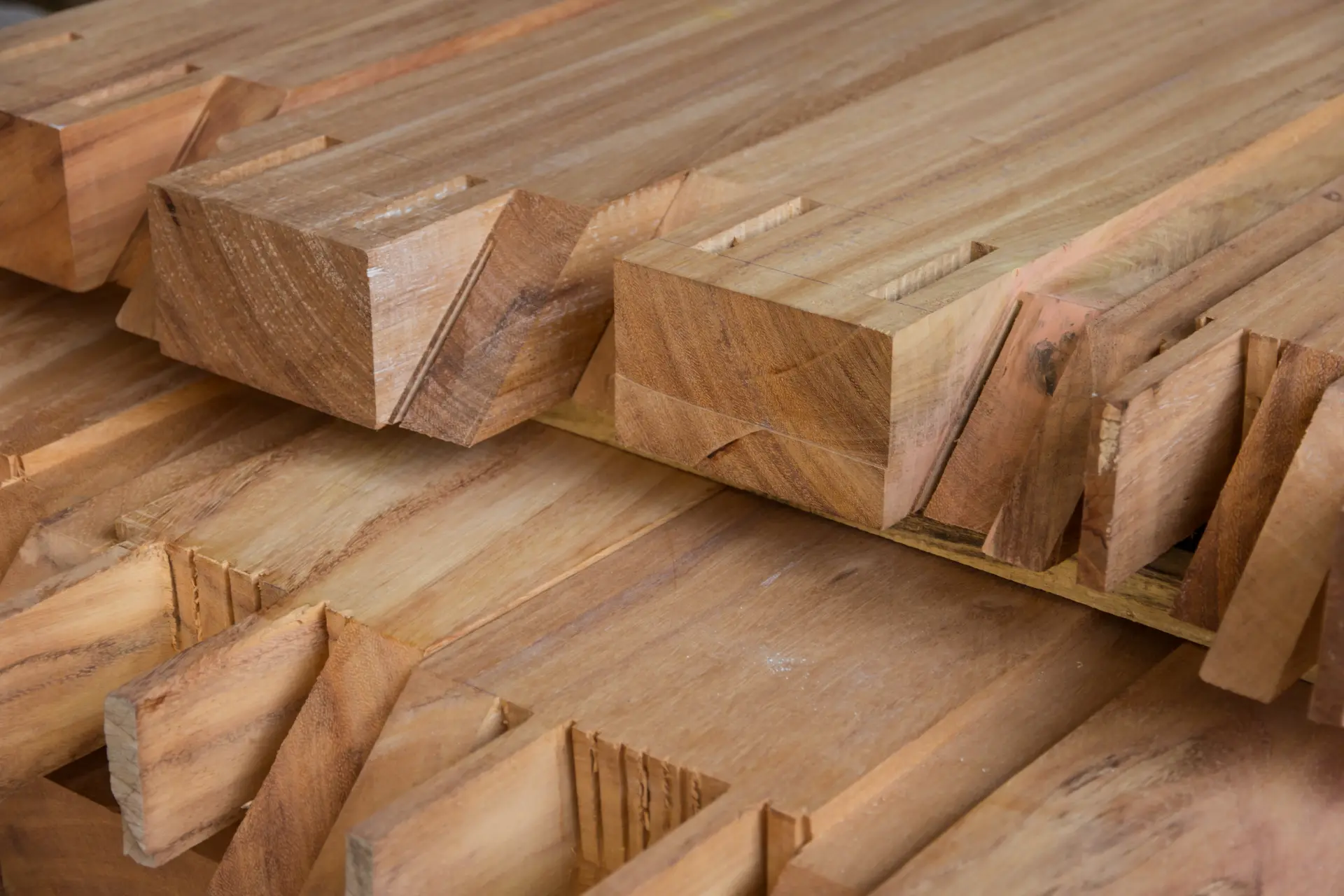
Solid Wood Options: Oak and More
Solid wood gives natural character and a premium feel in kitchen cabinets. The type of wood you choose affects strength, durability and appearance.
- Oak: A classic choice for kitchens. Oak is strong, durable and known for bold grain patterns. It hides small dents and scratches well and ages with rich colour.
- Ash: Light in colour, strong and easy to work. Suits painted or clear finishes.
- Maple: Smooth and fine grain. Good strength, a clean look, and takes light stains well.
- Walnut: Darker colour with striking grain. Premium appearance, best for feature doors or panels.
- Pine: A softwood that is easy to work and lower in cost. Softer surface, so it can get dents more easily in busy kitchens.
Solid wood fronts can be paired with plywood or MDF carcasses to save costs while keeping a quality look.
Strength, Durability and Everyday Life
In busy homes, strength and durability matter. Look for cabinets that are resistant to moisture and heat, and that keep their shape over time.
- Carcasses: Plywood offers excellent strength. High density chipboard and MDF can also work well when sealed.
- Fronts: Solid oak and veneered MDF are durable choices. Melamine is very resistant to scratches and is easy to wipe clean.
- Edges: Good edge banding keeps water out and helps surfaces stay neat. This small detail can extend the life of your kitchen cabinets.
Appearance and Aesthetics
The look of your kitchen cabinet fronts sets the mood of the whole room. Think about grain, colour and finish.
- Grain patterns: Oak and walnut give strong, natural grain patterns. Maple and ash give a smoother, calmer look.
- Colour: Clear lacquer shows off the natural wood. Paint can brighten a room and is easy to refresh. Stain can deepen the tone while keeping the wood character.
- Finish: Matte hides fingerprints. Satin gives a soft sheen. Gloss reflects light and can help smaller kitchens feel bigger.
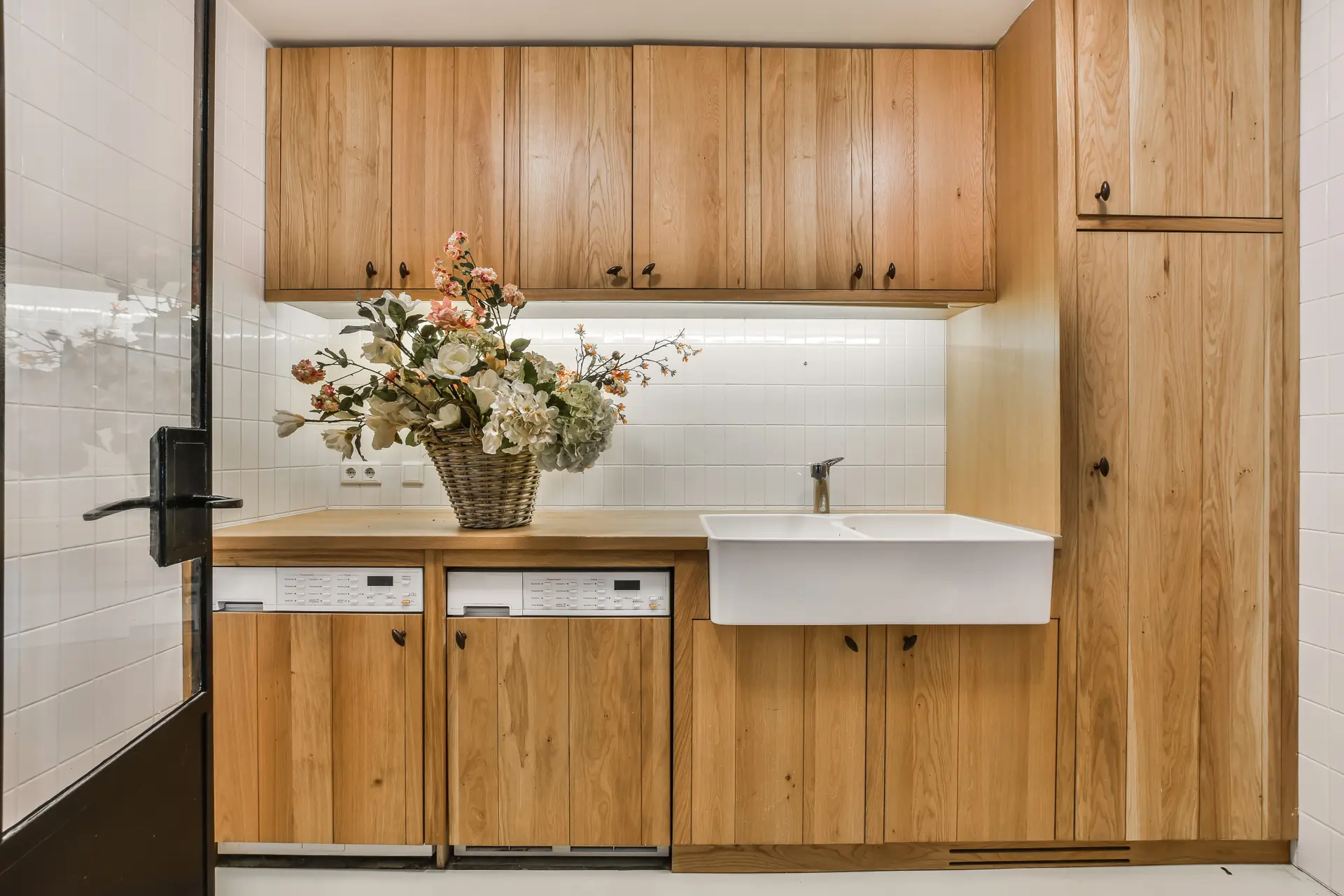
Moisture, Heat and Cleaning
- Kitchens see steam, spills and heat. Choose materials and finishes that are resistant to moisture and easy to clean.
- Use quality sealants on edges and cut-outs.
- Fit door panels with a small allowance so the wood can move a little with changes in humidity.
- Wipe spills quickly. Clean with a soft cloth and mild soap. Avoid harsh pads that cause scratches.
These simple steps help keep doors and drawers looking neat for a long time.
Where To Spend and Where To Save
- You can balance costs and quality with a mixed build.
- Spend on strong carcasses, like plywood, and on hinges and drawer runners.
- Good hardware improves daily use and lasts a long time.
- Save by choosing melamine or veneered MDF for large areas, then add a few solid wood accents for character.
- Plan your range of cabinets with standard sizes where possible. This makes making and fitting easy and can lower costs.
Making The Right Choice For Your Space
Each kitchen is different. Think about how you cook, how often you use the space and how careful your household is.
- For a very busy family kitchen, choose durable, moisture resistant materials that are easy to wipe.
- For a show kitchen with light use, you may choose a finer veneer for a premium appearance.
- For rental or small projects, melamine faced chipboard keeps costs low and still looks neat.
If you need help choosing, use the Theos Timber website to find a step by step guide that compares each type of wood and finish.
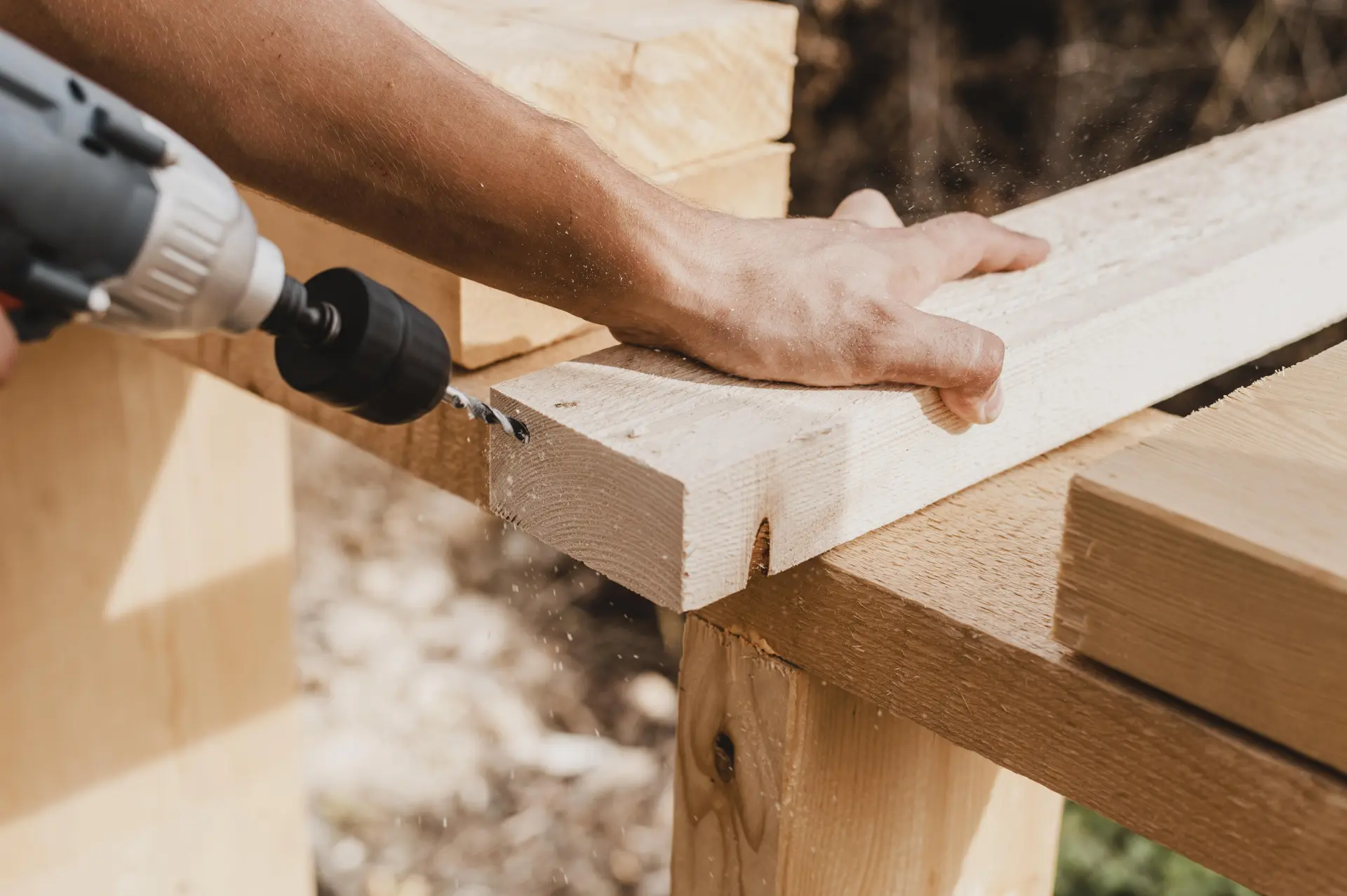
Construction Details That Matter
A kitchen cabinet is more than the door material. Build quality affects strength and life span.
- Back panels should be thick enough to keep boxes square.
- Fixings like dowels and screws should be secure and tight.
- Hinges and runners with soft close action reduce impact, which helps prevent dents and cracks over time.
- Ventilation around appliances helps reduce moisture build up.
These details help your kitchen work well day to day.
Sustainability and Sourcing
Look for timber from responsible sources. Many veneers and solid woods come with recognised certification. Engineered boards can also be a good choice because they make use of more of the tree and reduce waste. Ask where the wood comes from, which helps you choose materials that are better for the environment.
Type of Wood vs Engineered Boards
- Solid Oak: Strong, durable, rich grain, higher cost, needs sealing.
- Other Solid Woods: Maple, ash, walnut and pine each offer unique character and colour.
- Plywood: Strong carcass choice, stable, long lasting, mid to high cost.
- MDF: Smooth, easy to paint, stable, good value.
- Veneered MDF: Real wood appearance with a stable core, good value, many grain patterns.
- Melamine Faced Chipboard: Very easy to clean, wide range of looks, best value, long lasting when well sealed.
Best Timber For Kitchen Cabinets
- Set your budget and decide where to save and where to invest.
- Choose a carcass material first, then select door fronts for appearance.
- Pick a finish that fits your lifestyle, such as paint for easy updates or lacquer to show grain.
- Check hardware quality for smooth, strong daily use.
- Ask for samples to see colour and grain in your own light at home.
With this simple guide, you can choose the right materials for your kitchen cabinets and build a space that is strong, long lasting and good to work in over time.
Are you looking for a timber delivery in Stockport and Manchester?
We stock a range of timber products for Manchester, Liverpool, Preston, Oldham, Stockport, Warrington and the surrounding areas.

